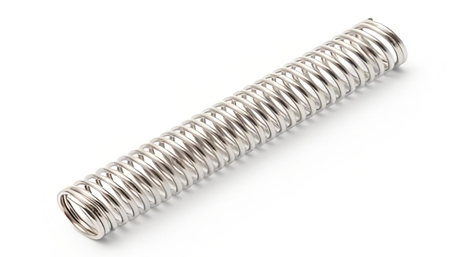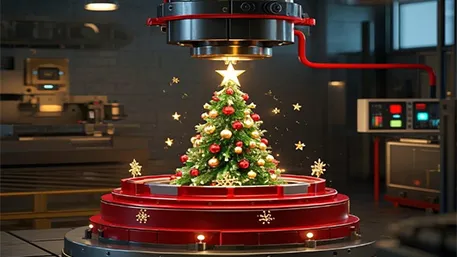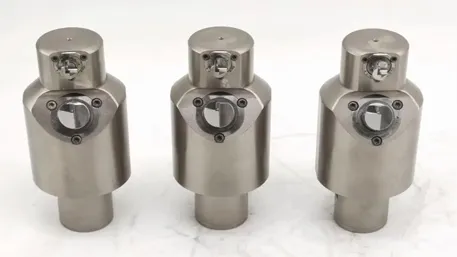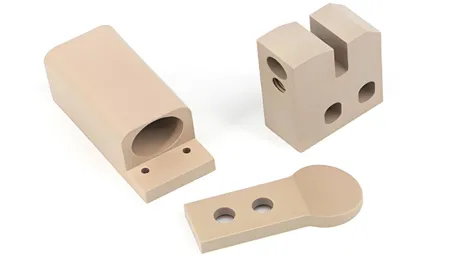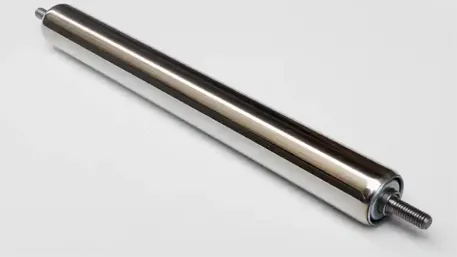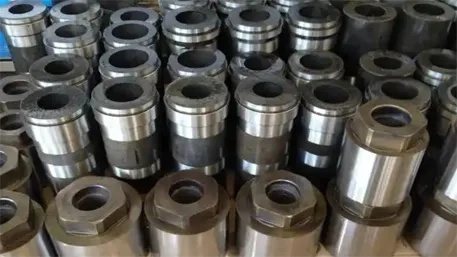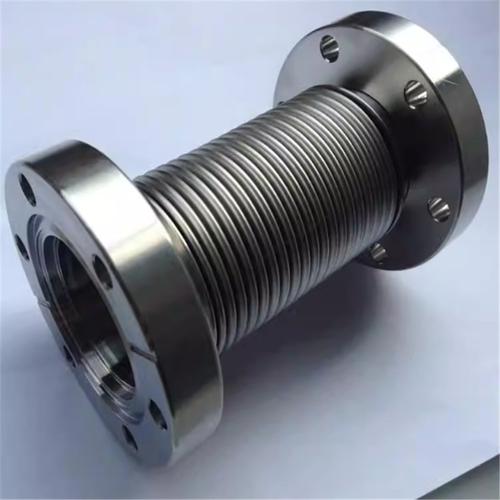Stainless steel springs are fundamental components across a vast spectrum of industries, including automotive, aerospace, electronics, and medical devices. They provide essential functions like energy storage, vibration dampening, and load bearing. As the demand for high – performance, customized springs continues to climb, CNC (Computer Numerical Control) machining has become the leading manufacturing approach. Recognized for its remarkable precision, adaptability, and consistent quality, CNC machining ensures that every custom stainless – steel spring meets the most stringent industry demands. This article will thoroughly explore the technical capabilities, customization process, material selection, quality control, and industry applications of custom CNC stainless – steel springs.
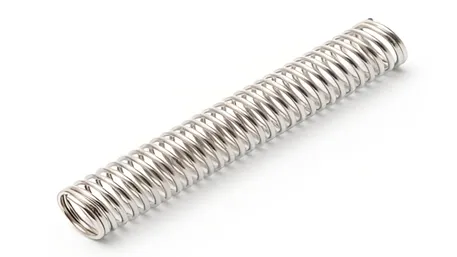
I. Technological Edge: Revolutionizing Spring Manufacturing
(A) Exceptional Precision
CNC machining systems are engineered to offer unwavering accuracy. With positioning accuracy of ±0.005mm and repeat positioning accuracy of ±0.01mm, we can produce springs with extremely tight tolerances. For instance, when manufacturing springs for aerospace applications, the wire diameter can be maintained within ±0.005mm, and the pitch uniformity can be precisely controlled. This level of precision maximizes the spring’s performance, reduces the risk of premature fatigue failure, and ensures reliable operation under extreme conditions.
(B) Complex Design Execution
Five – axis CNC machining technology enables the creation of springs with complex geometries. Whether it’s conical springs, variable – pitch springs, or springs with intricate end – shapes, the five – axis system can fabricate these designs in a single setup. Compared to traditional manufacturing methods, which often require multiple setups and are more likely to introduce errors, five – axis CNC machining reduces setup – related errors from ±0.03mm to within ±0.01mm. Moreover, it boosts production efficiency by over 60%, significantly shortening the production cycle.
(C) Advanced Process Optimization
During the manufacturing of stainless – steel springs, challenges such as spring set (permanent deformation) and surface roughness can occur. To address these issues, we implement a comprehensive set of advanced techniques. By carefully choosing cutting parameters, optimizing toolpaths, and integrating real – time monitoring systems, we can minimize spring set. Additionally, the use of high – speed machining and advanced finishing processes results in springs with an outstanding surface finish, enhancing fatigue resistance and extending the spring’s service life.
II. Comprehensive Customization: Tailoring to Your Exact Needs
(A) In – Depth Requirement Analysis and Design Ideation
When you approach us with your spring requirements, our experienced engineering team engages in thorough discussions to understand your application, performance expectations, and design preferences. Leveraging state – of – the – art CAD/CAM software, we generate multiple design concepts. We then collaborate closely with you, refining the designs until they precisely match your vision.
(B) Strategic Material Selection and Cost Assessment
Based on the finalized design, we recommend the most suitable stainless – steel grade. We consider factors such as corrosion resistance, fatigue strength, and cost – effectiveness. Simultaneously, we conduct a detailed cost analysis, factoring in material costs, machining complexity, and production volume, to provide you with a transparent and competitive quote.
(C) Precision Manufacturing and Order Tracking
Once you approve the design and quote, production commences. You can monitor the progress of your order in real – time through our dedicated online tracking platform. Our skilled technicians adhere to strict manufacturing standards, using advanced CNC machines to produce springs that meet the highest quality benchmarks.
(D) Rigorous Quality Assurance and Timely Delivery
After production, each spring undergoes a rigorous quality inspection. Only springs that meet our exacting standards are shipped to you. We also offer comprehensive after – sales support, addressing any concerns you may have during the product’s lifecycle.
III. Strategic Material Selection: Matching Material to Application
(A) 304 Stainless Steel: The Versatile Choice
304 stainless steel, with a density of 7.93g/cm³, offers a good balance of cost, corrosion resistance, and formability. It has a tensile strength of ≥515MPa, a yield strength of ≥205MPa, and an elongation of ≥40%. This makes it an ideal choice for general – purpose applications, such as consumer electronics and light – duty machinery, where cost – effectiveness and basic corrosion protection are important.
(B) 316L Stainless Steel: The Corrosion – Resistant Option
316L stainless steel, with a density of 7.98g/cm³, contains 2 – 3% molybdenum, which significantly enhances its resistance to chloride – induced corrosion. It has a tensile strength of ≥485MPa, a yield strength of ≥170MPa, and an elongation of ≥40%. This grade is particularly suitable for applications in the marine, food processing, and medical industries, where high – level corrosion resistance is crucial.
(C) 17 – 4 PH Stainless Steel: The High – Strength Solution
17 – 4 PH stainless steel combines high strength with good corrosion resistance. After heat treatment, it can achieve a hardness of up to HRC 40 – 45. It is often used in high – stress applications, such as automotive suspensions and aerospace components, where components need to withstand significant mechanical loads.
IV. Stringent Quality Control: Ensuring Top – Tier Quality at Every Stage
(A) Raw Material Inspection
All incoming stainless – steel materials are subject to strict quality checks. We use spectroscopic analysis to verify the chemical composition, ensuring that it meets the required standards. Additionally, hardness testing and metallographic analysis are performed to confirm the material’s integrity.
(B) In – Process Monitoring
Throughout the manufacturing process, we employ statistical process control (SPC) techniques to monitor key manufacturing parameters. Regular sampling and data collection help us identify and correct any potential issues promptly, ensuring consistent product quality.
(C) Final Product Validation
Before shipping, each spring undergoes a comprehensive inspection. We use high – precision measuring instruments to verify dimensional accuracy, ensuring that all critical dimensions are within ±0.005mm. Spring rate, fatigue resistance, and corrosion resistance are also tested to validate the spring’s performance.
V. Diverse Industry Applications: Empowering Multiple Sectors
(A) Automotive Industry
In the automotive industry, custom CNC stainless – steel springs are used in suspensions, engine valves, and clutches. Their high precision and durability ensure smooth rides, reliable engine operation, and long service life, even under harsh driving conditions.
(B) Aerospace
Aerospace applications demand components that can withstand extreme conditions. Custom CNC stainless – steel springs, particularly those made from high – strength and corrosion – resistant materials, are used in aircraft landing gear, engine control systems, and flight control mechanisms, providing the necessary reliability and performance.
(C) Medical Devices
In the medical field, custom CNC stainless – steel springs are used in a variety of devices, from surgical instruments to implantable devices. Their high precision and biocompatibility (especially when made from 316L stainless steel) ensure safe and reliable operation.
VI. Frequently Asked Questions (FAQ)
(A) What is the typical precision of custom CNC stainless – steel springs?
Our CNC machining can achieve a dimensional tolerance of ±0.005mm, ensuring a precise fit for your applications.
(B) How do I choose the right stainless – steel material for my springs?
The choice depends on your application’s requirements. If cost – effectiveness and general corrosion resistance are sufficient, 304 stainless steel is a good option. For highly corrosive environments, 316L stainless steel is recommended. In high – stress applications, 17 – 4 PH stainless steel is the way to go.
(C) What is the lead time for custom springs?
Lead times vary depending on the complexity of the design and order quantity. Simple designs can be completed in 3 – 5 days, while more complex ones may take 7 – 10 days. Rush orders are available upon request.
(D) Can CNC machining handle complex spring designs?
Absolutely. Our five – axis CNC machines can fabricate springs with intricate geometries, meeting even the most demanding design requirements.
(E) How much does it cost to customize stainless – steel springs?
Costs are determined by factors such as material, design complexity, precision requirements, and order quantity. While small – batch customization may be relatively costly, economies of scale can significantly reduce per – unit costs for larger orders.
VII. Customer Testimonials
An automotive parts manufacturer approached us to develop custom 17 – 4 PH stainless – steel suspension springs for high – performance vehicles. Our team used five – axis CNC machining to achieve the required precision of ±0.005mm. The springs not only met the strict quality standards of the automotive industry but also enhanced the performance of the vehicles. As a result, the manufacturer gained a competitive edge in the market.
A medical device company needed biocompatible 316L stainless – steel springs for surgical instruments. We implemented advanced machining techniques and rigorous quality control measures to ensure that the springs met the highest medical standards. The customer reported increased product reliability and reduced returns.
Reach Out Now for Your Custom CNC Stainless – Steel Springs!
Regardless of your industry or application, our team of experts is ready to collaborate with you. We offer a seamless end – to – end service, from design to delivery. Contact us today to discuss your project requirements and take the first step towards getting top – quality custom CNC stainless – steel springs.
